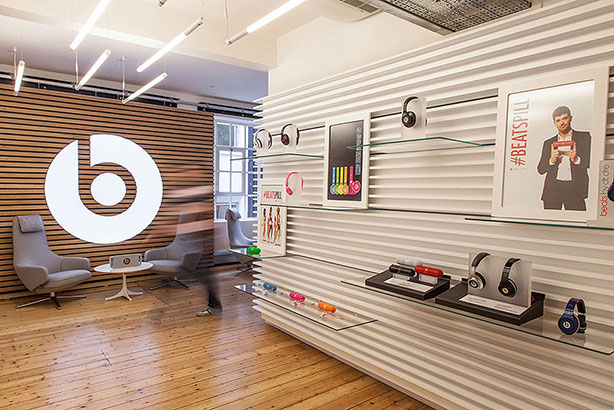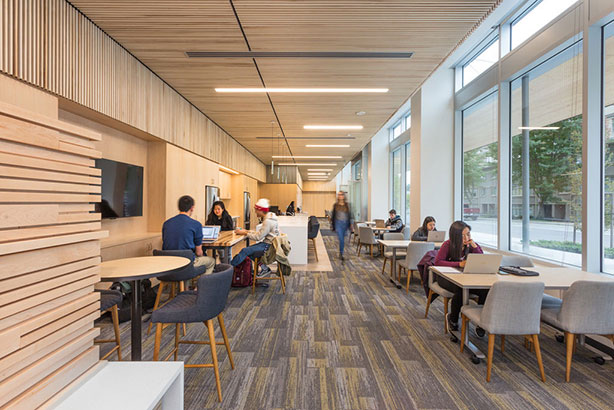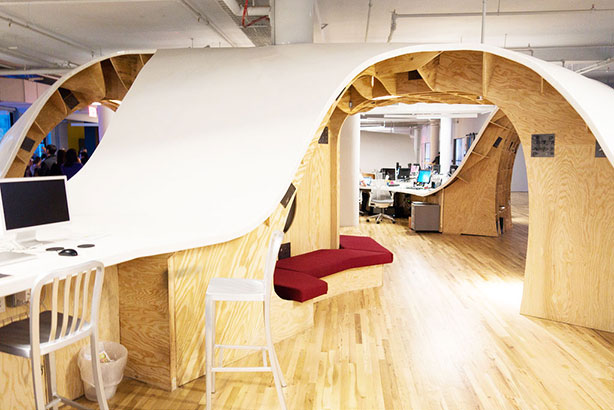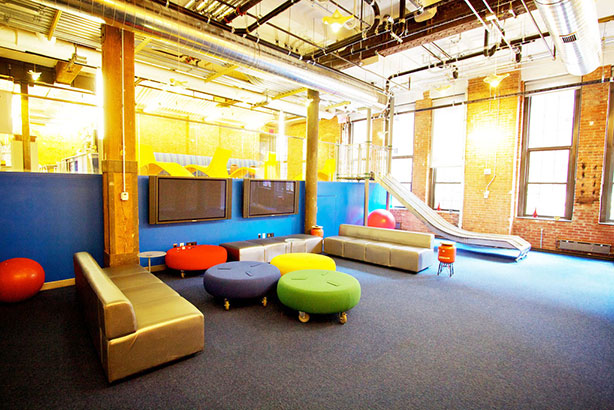The Millennial Office
By: Rick Hess/Mae Case
The traditional office environment sure has come a long way from that of the mid-century Mad Men era. As workplace interiors evolve to cater to the Millennial generation, we discover that personal desks are not a requirement, spaces for meetings can be large and open without necessarily being centered around a table, and places to decompress in the middle of the workday are increasingly common.
“The composition of the workforce has also been changing, with Millennials surpassing Gen Xers as the generation making up the largest percentage of the U.S. workforce in 2015. We can expect that technological change, urbanization and continuing global economic integration will cause further disruptions to the ways that we live, work and play by the time Millennials become an outright majority of the U.S. workforce in 2020,” according to Gensler.
The Millennial Office
Collaborative Spaces

Beats by Dre HQ designed by Bestor Architecture
“The millennial generation is not used to sitting at a desk for eight hours a day, five days a week. They want the ability to move around between various environments in the workplace so they can conduct their work and also relax,” says John P. Yodzis, President and COO of DOW Electronics. In response, expect more dry erase walls for collaboration along with casual seating areas where workers can exchange ideas, as in the Beats by Dre Headquarters. Our future offices will likely offer multiple spaces that allow for the continuous flow of ideas.
Quality of Light

Brock Commons Study Space
Poor light quality = less productive employees, headaches, and eyestrain, so the smart design solution is to incorporate natural daylighting and LED technology in offices. After all, don’t you as an employer want your employees to be more productive? Millennials are concerned with issues like glare and want their offices to aid their productive efforts. This includes lighting for public and social areas of the office well as, since these are important transition spaces between tasks.
Flexibility

The Barbarian Group office designed by Clive Wilkinson Architects
“In a survey of more than 4,000 workers across 11 industries, Gensler, the world’s largest architecture and design firm, found that the most innovative companies provide their organizations with a diversity of well-designed spaces in which to collaborate and to focus, as well as empowering employees with the ability to work when and where best suits their work needs,” according to a Gensler press release. Spaces that have the flexibility to accommodate different types of activities is an important aspect in the workplace. A space that can host a meeting one hour, and in the next hour be used as a quiet spot for readings and research, are being incorporated into modern day offices to give millennials the flexibility they desire.
Stress Relieving Spaces

Modern Office, designer unknown
Whether your idea of relaxation involves listening to music, playing a game, zooming down a slide, or surrounding yourself with nature, offices today have you covered. Millennials want spaces that allow them to blow off steam, and big companies are jumping on board. They find that giving their workers a place to decompress boosts their energy so they can get back to work and focus on the task at hand.
Work habits and personal preferences differ from person to person, and conditions that make one employee thrive can cause another to struggle with focusing. Millennial offices aim to alleviate these challenges by providing a variety of spaces so that everyone has the environments they need to reach their potential. Providing spaces to exercise, lounge with arcade games and even nap in the middle of the workday may still seem unorthodox to the Gen Xers and Baby Boomers accustomed to a more traditional workplace, but the evidence shows that these changes in at the office are beneficial to all employees and, in turn, the company.
Sources
https://bestorarchitecture.com/
http://www.gensleron.com/work/2016/5/16/the-value-of-designing-healthy-workplaces.html
https://www.flickr.com/photos/k2space/14227788154
https://www.flickr.com/photos/ubcpublicaffairs/38461236620
http://fortune.com/2016/03/29/coolest-offices-of-the-100-best-companies/
http://www.cbre.com/about/Live-Work-Play-2016
https://www.flickr.com/photos/mwichary/6015882512
http://www.archdaily.com/553201/inside-awards-name-2014-s-best-interiors-round-2
https://www.gensler.com/news/press-releases/us-workplace-survey-2016-findings
https://archpaper.com/2017/05/wellness-workplace-feature/
https://www.gensler.com/news/press-releases/us-workplace-survey-2016-findings
http://www.clivewilkinson.com/portfolio_page/the-barbarian-group/
https://www.flickr.com/photos/laughingsquid/14321041629